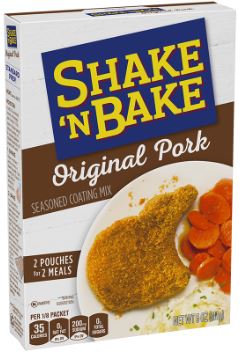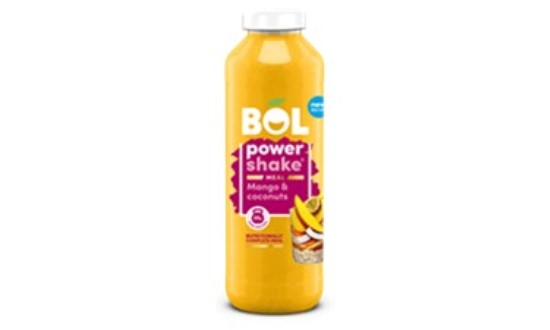Data-driven biometrics provide a competitive edge by helping brands determine how to update packaging design to catch consumer attention and inspire purchases.
When customers step into the Greenville, SC, shopping mart, it looks like any other grocery store — except all the shoppers have matching glasses. You’ll get handed a pair, too, if you’re there to browse. This is because it’s not the store it appears to be — it’s the lab for Package InSight by Quad, which is dedicated to applying biometrics to packaging design and collecting game-changing data in as realistic an environment as possible. The shoppers are focus-group participants wearing glasses that track eye movements to collect actionable insights about the split-second decisions they make as they browse shelves.
Through methods like this, biometrics are booming across a range of marketing applications, and giving brands a competitive edge by helping them determine how to update packaging design to catch consumer attention and inspire purchases. More and more, data drives decision-making across marketing tactics, including packaging, and biometrics add depth and precision to those insights.
Biometrics can strengthen a brand’s understanding of what’s most effective for reaching consumers, even within a specific retail environment. As an increasingly common source for marketing insights, biometrics are key for brands to keep pace with the demands and desires of their customers and create a more streamlined and impactful marketing experience.Image courtesy of Package InSights by Quad![Quad_PackageDigest_Biometrics[2].jpg](https://www.packagingdigest.com/sites/cet.com/files/Quad_PackageDigest_Biometrics%5B2%5D.jpg)
Shoppers in the lab wear glasses that track their eye movements and collect biometric data as they browse and make decisions.
What biometrics bring to packaging design.
Traditional focus groups use open-ended questions to gain valuable, even groundbreaking, qualitative insights into a shopper’s decision-making. However, focus groups don’t tell the full story. The human brain is estimated to process 11 million bits of information every second, which is far more information than what a shopper can articulate in retrospect about their experience. That means what’s shared in a focus group is only the tip of the iceberg.
Biometric tracking devices, such as the glasses used by Package InSight, a Quad company, provide key datapoints for consumer decision-making by the millisecond. For example:
- How quickly did the consumer see the brand on the shelf (Time to First Fixation, or TTFF)? A product on the shelf can only generate sales if it draws the attention of a browsing shopper. The more effectively a product’s packaging attracts someone browsing, the better its odds of making a sale.
- How long did they look at the item (Total Fixation Duration, or TFD)? After a product earns a first look from a consumer, an important next step is the ability to hold that person’s attention long enough for them to process key information to make a selection. Keeping a consumer’s attention for longer makes a product more competitive on the shelf.
- How often did they look (Fixation Count, or FC)? After a first scan of the shelf, a consumer’s eye will return to the products they’re considering. A higher fixation count is correlated to increased sales.
Data analysts pair these biometrics with insights from traditional focus group interviews to identify ways to update a brand’s packaging so that the product stands out, holds attention, and makes sales. Iterations of the package design are then placed back on the shelf for additional shopper testing. By changing just one element of the packaging at a time over several tests, the process delivers a final, updated design that goes back out to market. There’s no hand-off to another vendor, point-of-contact, or system, which would cause loss of quality, time, and money to brands.Image courtesy of Package InSights by Quad
Biometric data enabled Packaging InSight by Quad to update the packaging design for House-Autry, improving sales by 40%.
The ultimate data point: sales.
Products with packaging that has been redesigned based on biometrics can see significant uptick in sales when they are returned to the shelves in real retail environments. One such brand is House-Autry.
House-Autry came to the Package InSight Lab with a goal of increasing sales for its chicken breading product. Package InSight used biometric data to establish a baseline for the category and determine how House-Autry compared with its competitors on the shelf. Then, through a series of data-driven design updates and tests, the lab team made adjustments that updated the packaging. Insights from the biometric data resulted in an updated design and improved marketing experience that led to a 40% increase in sales for the brand.
The emerging technology of biometrics enables brands to quickly and accurately know what packaging grabs consumers’ attention on shelf; how long it holds attention; and how these factors influence actual purchases. With more certainty about how consumers will view their product on the shelf, brands are better informed and able to make more strategic decisions about packaging. Biometrics enhance and expedite the package redesign process, while also increasing the confidence brands can have that their marketing investment will deliver a high-impact payoff.
Drew Felty is co-founder of Package InSight by Quad, a consumer research lab in Greenville, SC, where brands make data-driven packaging decisions that drive adoption and sales. Felty has applied two decades of entrepreneurial experience to develop bottom-up research methodologies to see packaging through consumer eyes and to change the way packaging is researched, designed, and produced. Drew is also co-founder of PackagingSchool.com.
Source:











